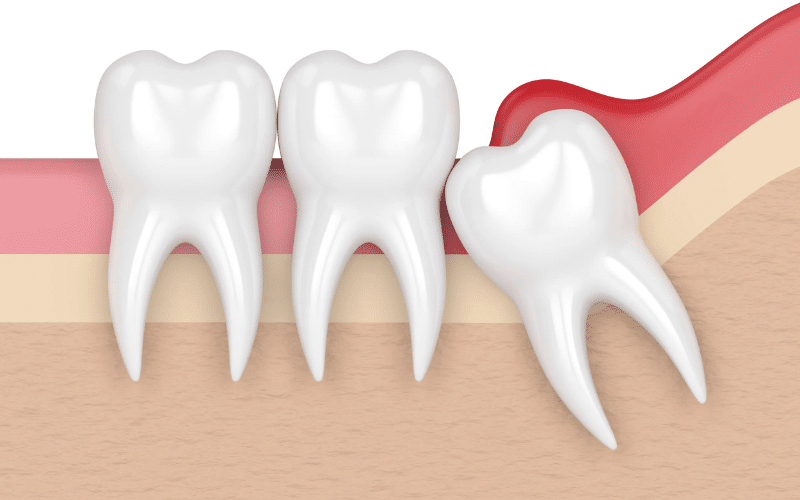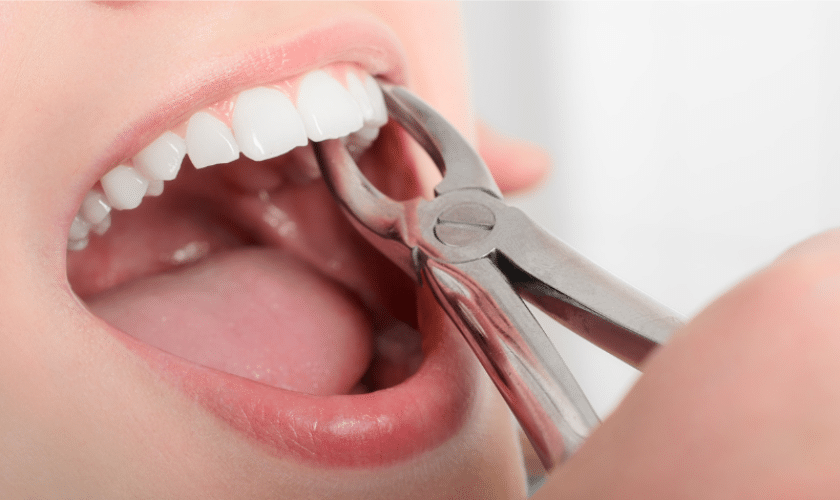
Although wisdom tooth removal is a frequent dental treatment, a smooth recovery and reduction of anxiety can be achieved by being aware of the healing process. Being aware of what to anticipate at each stage enables you to take good care of your mouth and prevent issues.
Step-by-step Guide To a Smooth Wisdom Tooth Recovery
Day 1: The Initial 24 Hours
For optimal recovery, the first day following wisdom teeth extraction is the most important.
What Can We Expect?
- Bleeding for a few hours after surgery.
- A little pain and swelling.
- A few hours of anesthetic numbness.
- Limited capacity to open the mouth.
How Should Your Mouth Be Maintained?
- To stop the bleeding, gently bite down on the gauze.
- To lessen edema, apply an ice pack.
- Limit your diet to soft foods like soup and yogurt.
- To avoid dry socket, refrain from smoking, using straws, and spitting.
Days 2-3: Handling Pain & Swelling
The second or third day may see the height of the swelling and discomfort. This is a typical symptom of the body’s healing process.
What Can We Expect?
- More swelling around the mouth and cheekbones.
- You can use medication to treat mild to moderate pain.
- Bruising can begin to show.
Follow up with a dentist in Allen, TX, if any concerns arise.
How Should Your Mouth Be Maintained?
- Keep applying ice packs to reduce swelling.
- Use painkillers, whether prescribed or over-the-counter, as recommended.
- To avoid infection, gently rinse your mouth with warm salt water.
- Keep your teeth clean, but refrain from brushing close to the extraction site.
Days 4-7: Early Recovery Starts
The discomfort and swelling should begin to go down by the end of the first week, and you’ll see a slow healing process.
What Can We Expect?
- Decreased swelling and pain
- Formation of a protective clot over the extraction site
- Some tenderness when chewing
How Should Your Mouth Be Maintained?
- Switch from ice packs to warm compresses if swelling persists.
- Gradually introduce soft solid foods like mashed potatoes or eggs.
- Avoid strenuous activities that could dislodge the clot.
- Keep the area clean with salt water rinses.
Studies show that 85% of patients recover fully within two weeks after wisdom tooth extraction, but some may experience prolonged healing due to factors like smoking, poor oral hygiene, or underlying health conditions.
Week 2: Gums Start Closing Up
By the second week, you should feel little to no discomfort, and your extraction site should be healing well.
What Can We Expect?
- Gum tissue closing over the socket
- Minimal to no pain
- Jaw stiffness improving
How Should Your Mouth Be Maintained?
- Resume regular brushing and flossing but be gentle around the site.
- Eat a balanced diet to promote tissue healing.
- Continue avoiding hard, crunchy, or sticky foods.
Weeks 3-4: Full Recovery
For most patients, the healing process is nearly complete by the end of a month. However, deeper tissue healing may take longer.
What Can We Expect?
- The extraction site should be nearly closed.
- No pain or swelling.
- Normal eating and speaking abilities restored.
A Smooth Recovery Is Possible!
Recovering from wisdom tooth removal is a step-by-step process. By following proper aftercare, you can heal comfortably and get back to your routine in no time. If you notice unusual pain, swelling, or signs of infection, consult our dentist immediately for guidance.









